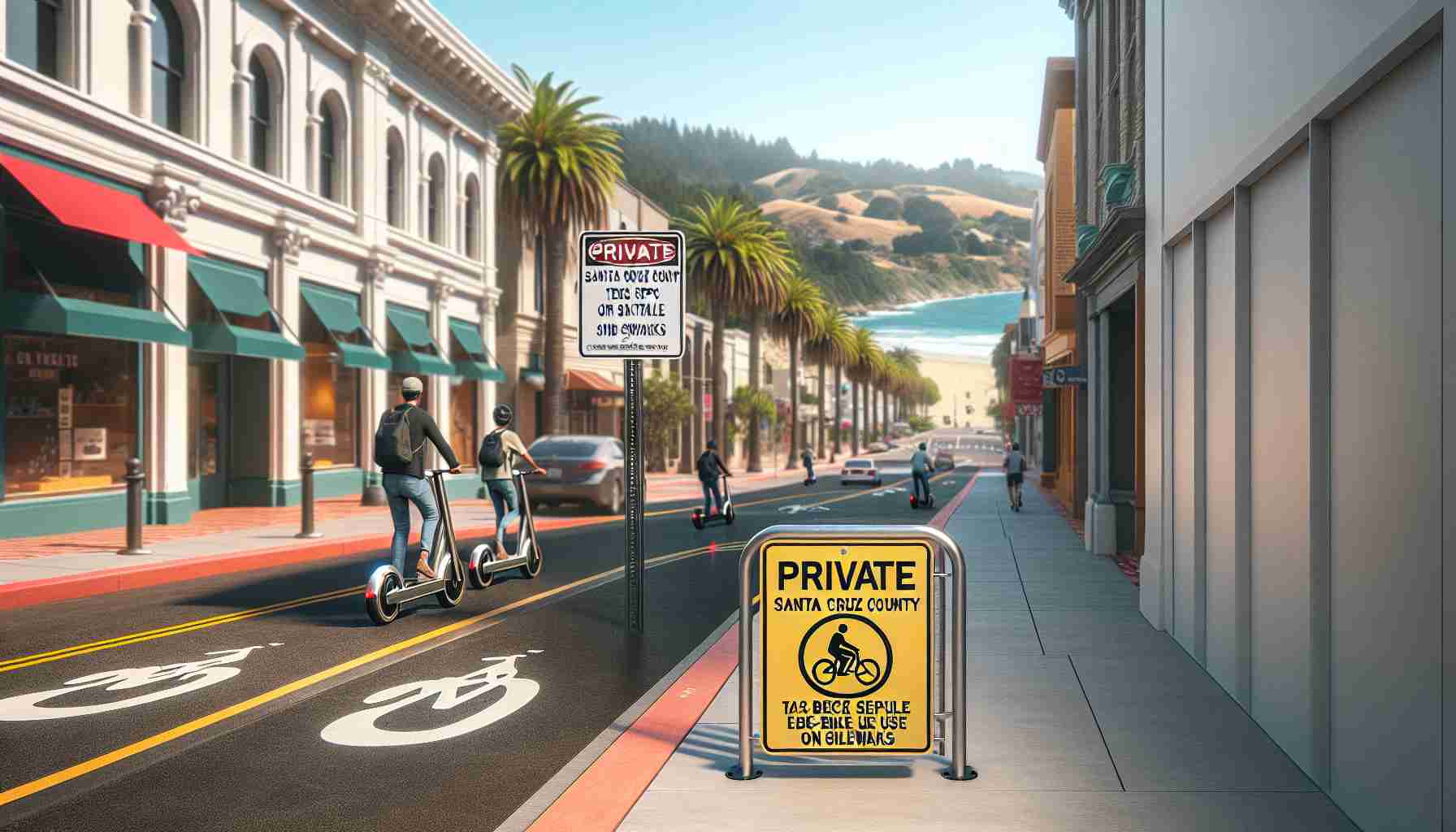In response to the increasing popularity of electric bicycles, Santa Cruz County leaders are taking action to regulate the inappropriate use of pedestrian facilities by riders. The County Board of Supervisors has adopted an ordinance that will make it illegal to ride an e-bike on sidewalks, with the exception of cases where there is no bike lane and no pedestrians are present. The ordinance also prohibits riding e-bikes on paths in county parks, unless the route is designated as a bikeway or if signage permits it.
Supervisor Manu Koenig, who proposed the ordinance, acknowledged that e-bikes can reach speeds of 20-28 mph and weigh between 40-70 pounds. This poses a safety concern when riders choose to use sidewalks as their preferred mode of transportation.
Given that e-bikes are legally classified as personal property rather than vehicles, the county’s ability to enforce regulations and safety standards is limited. To address this issue, the existing county code for motorized bicycles and scooters will be repealed and replaced with a revised code that specifically includes e-bikes. Violations will continue to be treated as infractions.
While efforts are underway at the state level to create a regulatory framework for e-bikes, there is currently no comprehensive solution that addresses conflicts on sidewalks. Santa Cruz County’s ordinance aims to remove potential risks and safety issues by setting clear guidelines for e-bike usage.
The introduction of this ordinance coincides with the ongoing rollout of BCycle, an e-bike rideshare program, across the county. The surge in e-bike sales nationwide, as reported by ABC News, highlights the need for proactive measures like the one taken by Santa Cruz County.
While some individuals have expressed concerns that the new ordinance does not go far enough, the county officials emphasize that it is a crucial first step. They believe that public education, outreach, and the expansion of bike lanes will be essential in creating a safe environment for all road users while accommodating the growing popularity of e-bikes.
By implementing regulations that address the inappropriate use of sidewalks by e-bike riders, Santa Cruz County aims to strike a balance between enabling alternative modes of transportation and ensuring the safety of pedestrians and e-bike users alike.
The growing popularity of electric bicycles, or e-bikes, has prompted Santa Cruz County leaders to take action to regulate their use on pedestrian facilities. The County Board of Supervisors recently adopted an ordinance that makes it illegal to ride e-bikes on sidewalks, except in cases where there is no bike lane and no pedestrians are present. Riding e-bikes on paths in county parks is also prohibited, unless the route is designated as a bikeway or if signage permits it.
One of the reasons behind this regulation is the safety concern posed by e-bikes, which can reach speeds of 20-28 mph and weigh between 40-70 pounds. Supervisor Manu Koenig, the proponent of the ordinance, recognized that the use of sidewalks by e-bikes can put pedestrians at risk.
E-bikes are legally classified as personal property rather than vehicles, limiting the county’s ability to enforce regulations and safety standards. To address this issue, the county will repeal and replace the existing code for motorized bicycles and scooters with a revised code that specifically includes e-bikes. Violations will be treated as infractions.
While efforts are underway at the state level to develop a regulatory framework for e-bikes, there is currently no comprehensive solution that addresses conflicts on sidewalks. Santa Cruz County’s ordinance aims to establish clear guidelines for e-bike usage and eliminate potential risks and safety issues.
The introduction of this ordinance coincides with the launch of BCycle, an e-bike rideshare program, across Santa Cruz County. The surge in e-bike sales nationwide further underscores the need for proactive measures like the one taken by the county.
Some individuals have expressed concerns that the new ordinance does not go far enough, but county officials stress that it is an important first step. They believe that public education, outreach, and the expansion of bike lanes will be essential in creating a safe environment for all road users while accommodating the increasing popularity of e-bikes.
Overall, Santa Cruz County’s regulation of e-bike usage on sidewalks reflects a commitment to strike a balance between promoting alternative transportation modes and ensuring the safety of both pedestrians and e-bike riders.
For more information on e-bikes and their impact on transportation, visit Electric Bike.
